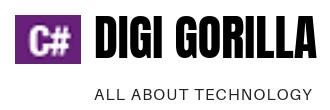Here am going to explained with an example , how to implement jQuery UI DatePicker Calendar with ASP.Net TextBox.
.aspx code
.aspx code
<script src="../Scripts/jquery-1.12.4.min.js" type="text/javascript"></script>
<script src="../Scripts/jquery-ui-1.12.1.min.js" type="text/javascript"></script>
<link href="../Content/themes/base/jquery-ui.css" rel="stylesheet" rel="Stylesheet" type="text/css" />
<script type="text/javascript">
$(function () {
$("[id*=txtDate]").datepicker({
showOn: 'button',
buttonImageOnly: true,
buttonImage: 'images/calendar.png'
});
});
</script>
<div class="form-inline" role="form">
<div class="form-group">
<asp:TextBox ID="txtDate" runat="server" ReadOnly = "true"></asp:TextBox>
<asp:Button ID="btnSubmit" runat="server" Text="Submit"
onclick="btnSubmit_Click" />
</div>
</div









